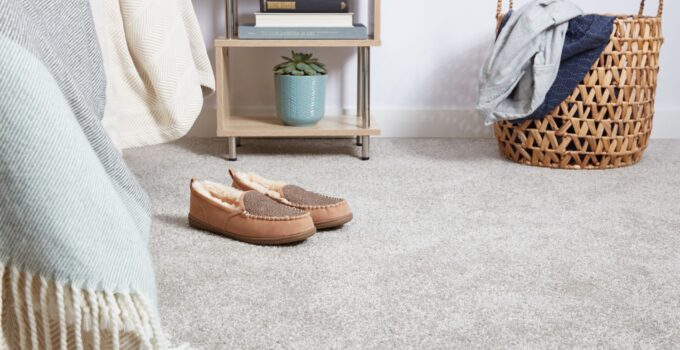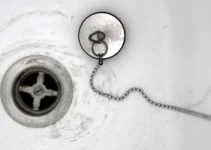Rugs are a must-have after laying hardwood floors. Do you have one yourself?
An often talked-about topic and the issue is whether or not to use rug pads with the appropriate area. However, why damage your pricey floors in the first place? An additional layer is a must!
This article will discuss the factors that determine which pad is ideal for rugs, including those that affect air quality and stain resistance.
Did you know that if the rug is left on a poor pad for too long, the floor may suffer irreparable damage? Keep on reading to find out all there’s to it.
Why you might need a rug pad in your home?
Selecting ” the one” rug pad is essential and can prevent further complications in your home. If you know of someone who has it, ask them for their opinion on it.
Just a handful of the many important uses for rug pads are:
- Can prevent injury for you or your little ones so you don’t slip and slide
- Rugs can cause trips and falling if they move around on the floor, but a rug pad will prevent that from happening
- It will prevent it from scratching the floor
- A rug pad is also useful for preventing dye transfer from the rug to the floor underneath it
In the end, this handy little item can greatly extend the life of your rug by protecting its fibers from compression and wear and tear.
How to choose the best rug pad materials?

Source: rugpad.com
A ton of people struggle since they don’t know where to shop or which item to look into. Rug pads for hardwood floors are available to buyers with a focus on user comfort and safety.
The first worry should be that the materials they are made of won’t damage your flooring.
Then, make sure that their density will prevent damage to your flooring from punctures and dents. Consider the safety and traction a rug pad provides. Inspect your favorite chosen piece and read its specifications.
The truth is that cushioning can be improved by switching to pads made entirely of felt. You can opt for:
- Try the rebond padding – this is made from recycled foam scraps and measuring between and is affordable to go for.
- Polypropylene carpet pads – a cool alternative that works well. It can be used more than once and gives a lot of padding. Poly rug pads are made by rolling a mixture of very fine fibers into a very thin sheet.
- Fiber padding – which is created from previously used polyester fibers. This type is less comfy than others, but it is long-lasting and great at preventing slipping under area rugs. You can also discuss and choose from natural fibers or man-made fabrics made from recycled resources.
What to avoid?
Any rugs and cushions made of rubber, foam, latex, vinyl, plastic matting, or that lack ventilation should not be utilized.
Plasticizers in certain PVC (vinyl) carpets can leave a stain on wood or finish.
Not forgetting that they can have an offensive odor.
The anti-slip synthetic rubberized material is a common choice for lining cupboards and drawers.
Use this type of pad on your floor only if you are certain it will not scratch or otherwise harm the finish.
To remove the “rug pad stain,” the entire floor must be scrubbed and refinished, which will be time-consuming and costly.
Frequently, the rubber backing of bathroom-specific carpets discolors vinyl and linoleum. They are capable of leaving a lasting impression on hardwood flooring. Additionally, you should avoid pads with excessively stiff grippers or cleats.
So, why do you need a rug for a hardwood floor?

Source: shawfloors.com
Beautiful as it is, hardwood flooring can leave a huge dent in your budget.
A quality rug pad will safeguard your hardwood flooring from wear and strain, saving you time and money when it comes time to refinish the floor.
Not only can placing it directly on a hardwood floor cause the rug to slip and bunch, but it will also present a significant tripping danger.
Between the area rugs in your home and the hardwood flooring, you can place a nonslip rug pad.
The addition of a thick rug cushion can significantly improve how rugs feel underfoot on hardwood floors, which lack natural padding.
This is useful in bedrooms and living areas where people frequently sit on the floor or go barefoot.
If you’ve never attempted this strategy before, this may be a good moment to do so.
Which material to stick with when buying in-person or online?
If you choose the incorrect rug pad for your wood floors, you may cause more harm than good.
Choose a rug pad that is both thick and soft, such as one made from a mixture of rubber and felt, to protect your hardwood floors.
This pair securely attaches your rug to tile or wood without harming either material.
If you attempt to save money by selecting a substandard product, you will wind up with a pad that has a cheap rubber base but is coated with chemical adhesives to strengthen its grip and make it adhere to your pricey hardwood flooring.
This adhesive will degrade over time, causing damage to your floor and rug stains.
The adhesives used to cover inexpensive rug pads, such as polyvinyl chloride (PVC) or synthetic rubber, are also known carcinogens.
High-quality material and option will serve as daily protection from harmful elements. If you want to protect your family’s health and save money in the long run on additional costs and add-ons, invest in a high-quality rug pad instead of a cheap one.

Source: rugpadusa.com
Where can you shop for the right rug pad?
If you want to give these pads a try after reading this article make sure that you check out RugPad. They are made in the USA and are super durable yet high-quality options that one can consider. They are not too pricey + you can enjoy a discount code on some of the models. You can find hardwood floors, rug pads, outdoor options & carpet floors on their site, perfect for anyone’s convenient use.







